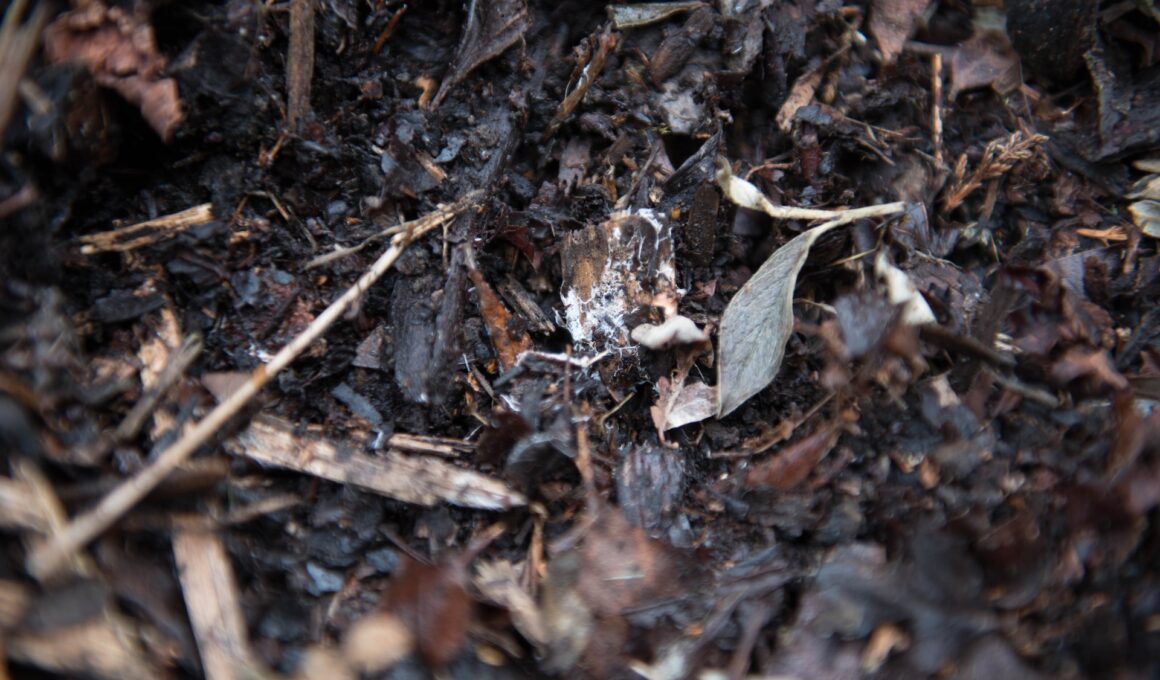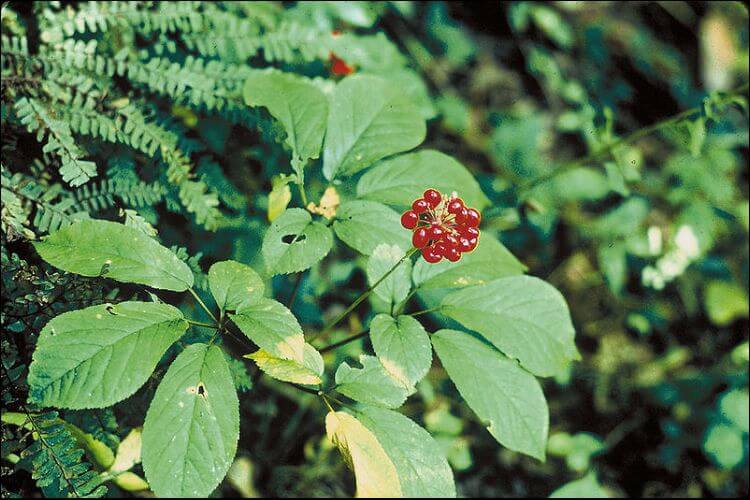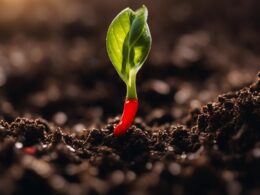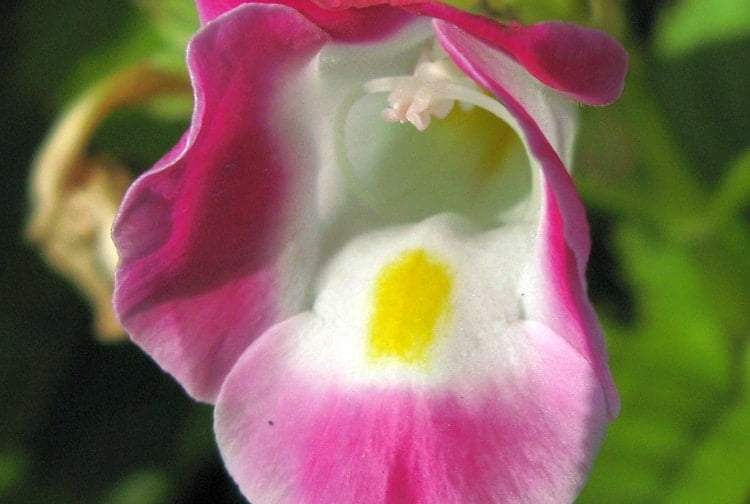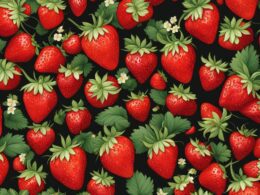The Benefits Of Composting
Did you know that about 30% of the waste we produce consists of food scraps and yard waste? Composting is an excellent way to reduce this number while benefiting the environment. Not only does it help recycle organic materials, but it also produces nutrient-rich soil that’s perfect for gardening. Plus, composting helps keep our landfills from overflowing and reduces greenhouse gas emissions. Composting at home can be a fun and rewarding experience. It may seem intimidating at first, but once you get started, you’ll quickly see how easy it is. All you need are some basic tools like a compost bin or pile, kitchen scraps, and yard waste such as leaves or grass clippings. By combining these materials in the right ratio, you’re creating a safe haven for microorganisms to break down the organic matter into humus—a dark, crumbly substance that provides essential nutrients for plants. So why not give composting a try? You’ll be contributing to a healthier planet by reducing your carbon footprint and conserving landfill space. And don’t forget about those thriving plants! With rich compost added to your garden beds or potted plants, they will grow stronger roots and become more resistant to pests and diseases. Now go ahead—make Mother Earth proud by starting your very own compost pile today!Understanding The Composting Process
Composting is an important part of gardening and preserving the environment. It’s the process of breaking down organic materials into a soil-like substance called compost. Composting basics include understanding what materials to include and exclude from the compost pile. Compost ingredients should include organic materials such as fruits and vegetables, coffee grounds, eggshells, and grass clippings. Avoid adding meat, dairy products, and any processed food items to the compost pile.Composting Basics
Composting can be a bit intimidating at first, but don’t worry; we’re here to help you through this process. By understanding the basics of composting, you’ll soon realize that it’s not only good for your garden and the environment, but it can also provide a sense of accomplishment and satisfaction in knowing that you’re doing something valuable with your kitchen scraps and yard waste. To start off on the right foot, let’s talk about what should go into your compost pile. A healthy mix of ‘greens’ (nitrogen-rich materials) and ‘browns’ (carbon-rich materials) is essential for successful composting.- Greens include fruit and vegetable scraps, coffee grounds, eggshells, grass clippings, and plant trimmings.
- Browns consist of dried leaves, small branches or twigs, cardboard pieces, newspaper strips (non-glossy), sawdust from untreated wood, and even dryer lint!
Compost Ingredients
Now that you’ve got the basics down, let’s dive a bit deeper into the world of compost ingredients. Remember, it’s all about finding that perfect balance between greens and browns to create a safe haven for those hardworking microorganisms who are breaking things down in your pile. Think of them as tiny superheroes working tirelessly behind the scenes to transform your scraps and yard waste into nutrient-rich gold for your garden! And just like any superhero team, they need the right resources to get their job done. As you collect materials for your compost heap, keep an eye out for items with varying textures—this helps aerate the pile and prevent clumping or matting which can slow down decomposition. A mix of soft (like fruit peels) and harder items (such as twigs) is key. If you’re unsure whether something can be added to your compost bin or not, it’s better to err on the side of caution; after all, we want our little microbial friends to have a safe environment where they can thrive! So go ahead and start gathering up those kitchen scraps and yard trimmings—you’ll soon discover how satisfying it is knowing that what once was considered ‘waste’ will now nourish your plants while also benefiting Mother Earth herself.Essential Components For A Healthy Compost Pile
Now that we’ve gained a better understanding of the composting process, let’s dive into the essential components needed for a healthy and thriving compost pile. A well-balanced compost pile is crucial to producing nutrient-rich soil that can be used in your garden or yard. This not only helps plants grow but also ensures safety by reducing the presence of harmful substances.- Greens: These materials are rich in nitrogen and promote rapid decomposition.
- Examples: fruit and vegetable scraps, grass clippings, coffee grounds
- Browns: These materials provide carbon and serve as an energy source for microorganisms.
- Examples: leaves, straw, wood chips, sawdust
- Water & Oxygen: Both water and oxygen are vital for maintaining moisture levels and supporting aerobic bacteria growth.
Green Materials: Nitrogen Sources
Green materials, also known as nitrogen sources, are an essential part of any compost pile. These materials help to break down the brown materials or carbon sources in your compost bin and speed up the decomposition process. Including a good mix of green materials will ensure that your compost is rich in nutrients and safe for use in your garden. Some great examples of green materials include fresh grass clippings, fruit and vegetable scraps, coffee grounds, tea bags, eggshells, and even hair! It’s important to note that not all green materials are created equal when it comes to breaking down quickly. For instance, fruit and veggie scraps tend to decompose faster than woody stems or thick leaves. When adding these items to your compost bin or pile, make sure you chop them into smaller pieces first so they can decompose more easily. As you create your ideal compost mixture with both green and brown materials, remember that balance is key. Aim for about two-thirds brown material (carbon) and one-third green material (nitrogen). This ratio helps maintain a healthy environment for microorganisms while preventing foul odors from developing. By following these guidelines on including nitrogen-rich sources in your composting efforts, you’ll be well on your way to creating nutrient-dense soil perfect for growing lush plants while keeping your household waste out of landfills.Brown Materials: Carbon Sources
Now that we’ve covered some of the best materials for composting, let’s dive a little deeper into one important category: brown materials. These are essential to have in your compost pile because they provide a rich source of carbon. Don’t worry about running out of options, as there are plenty of choices when it comes to finding suitable brown materials. Dead leaves, small branches, and twigs make excellent additions to your compost mix. They break down slowly over time, helping create a balanced environment for decomposing organisms such as bacteria and fungi. Plus, using these natural resources can help you clean up your yard while providing valuable nutrients back to the earth. You might also consider adding shredded newspaper or cardboard – just be sure to avoid any glossy pages or colored ink as they may contain harmful chemicals. Another great choice for brown material is straw or hay. Not only does it add structure to your compost pile, but it also helps maintain proper moisture levels by allowing air circulation throughout the heap. If you’re worried about attracting pests with food scraps, mixing them well with ample amounts of brown material can keep unwanted visitors at bay. Remember that having the right balance between green (nitrogen-rich) and brown (carbon-rich) ingredients will ensure your compost remains healthy and productive in breaking down organic matter into nutrient-dense humus for your garden. So go ahead and start collecting those fallen leaves and other carbon sources – both you and Mother Earth will thank you!Items To Avoid In Your Compost Pile
Now that we’ve covered the best materials for composting, it’s important to know which items you should avoid putting in your compost pile. Some things might seem harmless, but they can actually cause problems or even be dangerous when mixed with other organic materials. In this section, we’ll go over some of the most common items that you should steer clear of when creating your perfect compost mix. First and foremost, do not add any meat or dairy products to your compost pile. These materials can attract pests like rodents and flies, leading to an unhealthy and unsafe environment around your compost bin. Additionally, these animal-based products decompose at a much slower rate than plant-based materials, so they may throw off the balance of your compost mix. Another item to avoid is pet waste; dog and cat feces contain harmful bacteria that can contaminate your compost and pose a health risk if used on edible plants. Lastly, stay away from adding any chemically treated wood or sawdust to your compost pile. This type of material often contains toxic chemicals such as arsenic and creosote that are harmful to both humans and plants. By avoiding these hazardous elements in your compost mix, you’ll ensure safety for yourself and others while also promoting a healthy environment for the beneficial microorganisms responsible for breaking down organic waste into nutrient-rich soil amendment. So remember: keep meats, dairy products, pet waste, and treated wood out of your compost heap!Balancing The Carbon-To-Nitrogen Ratio
You know what they say, ‘Too much of a good thing can be bad.’ This holds true when it comes to composting as well. The key to creating the perfect compost lies in balancing the carbon-to-nitrogen ratio (C:N ratio). If you want your compost pile to break down quickly and efficiently, you need to maintain this delicate balance. The magic number for an ideal C:N ratio is about 25-30:1. This means that for every pound of nitrogen-rich material, like food scraps or green plant waste, you should add around 25-30 pounds of carbon-rich material such as dried leaves, straw, or paper products. Nitrogen promotes rapid microbial growth which helps with decomposition while carbon provides energy for these microorganisms. It’s important not to have too much nitrogen because it causes foul odors and slows down decomposition; on the other hand, too little nitrogen also hinders the process as microbes won’t have enough resources to grow properly. So how do we achieve this perfect balance? Start by layering different materials in your compost bin or pile. Begin with a base layer of coarse brown materials like small branches or twigs followed by alternating thin layers of greens and browns until you reach the desired height. To speed up decomposition, make sure to turn and mix your pile regularly so oxygen reaches all parts of it – remember those helpful microorganisms need air too! And always keep an eye on moisture levels ensuring that your pile remains damp but not soaking wet – think “sponge after being wrung out”. By keeping these tips in mind and maintaining that essential C:N ratio balance, you’ll soon have rich, nutrient-packed compost ready to nourish your garden safely and effectively.Maintaining Proper Moisture And Aeration
Now that you know what materials to include and exclude in your compost pile, it’s important to focus on maintaining proper moisture and aeration. This will not only speed up the decomposition process but also create a safe environment for beneficial organisms like worms and microbes. These critters are essential for breaking down organic matter into nutrient-rich compost. One way to ensure an ideal balance of moisture is by following these key tips:- Layering: Alternate layers of green and brown materials.
- Green Materials: Rich in nitrogen; examples include fresh grass clippings, fruit scraps, or coffee grounds.
- Brown Materials: High in carbon; examples consist of dried leaves, straw, or cardboard.
- Turning: Regularly turn the compost with a pitchfork or shovel to mix materials evenly.
- This helps redistribute moisture throughout the pile so everything breaks down more efficiently.
- Turning also introduces oxygen which encourages aerobic bacteria growth—a driving force behind speedy decomposition!
- Watering: Keep the compost as damp as a wrung-out sponge—moisture is crucial for microbial activity.
Troubleshooting Common Compost Issues
Imagine you’re a detective trying to solve the mysterious case of your compost pile not breaking down properly. You’ve already gathered all the right materials, but something seems off. Don’t worry – just like any good investigator, we’ll help you examine the clues and troubleshoot some common compost issues. One possible suspect in this mystery is temperature. Your compost pile should feel warm to the touch as heat helps break down organic matter more quickly. If it’s too cold, try turning the pile frequently to increase airflow and speed up decomposition. Additionally, ensure that there are enough nitrogen-rich materials (like green grass clippings or kitchen waste) mixed with carbon-rich sources (such as dried leaves or small branches). This will provide essential nutrients needed for microorganisms to thrive and do their job in breaking down your compost. Another clue might be an unpleasant smell coming from your pile. A healthy compost should have an earthy aroma rather than a foul stench. The source of this issue can often be traced back to improper moisture levels or inadequate oxygen supply within the heap. To fix this problem, make sure your pile isn’t too wet by adding more brown material like straw or cardboard; conversely, if it’s too dry, add water until damp but not soggy. Turning the pile also increases oxygen flow which reduces odors and speeds up decomposition. Remember that maintaining balance is key when creating a safe haven for beneficial decomposers who work tirelessly on transforming your scraps into rich soil that plants will love.How To Use Your Finished Compost
Now that you’ve created your amazing compost using the right materials, it’s time to put it to good use! You might be wondering how exactly you can incorporate this nutrient-rich substance into your garden or lawn. Don’t worry; we have some easy and safe ways for you to get the most out of your finished compost. One fantastic way to use your compost is by spreading a thin layer on top of your soil as a mulch. This will not only help retain moisture in the soil but also provide essential nutrients for plant growth. If you’re planting new seeds, mix some compost with the soil before sowing them. This gives your plants an excellent start by offering a nourishing environment for their roots. For potted plants, simply sprinkle a handful of compost around the base of each plant – they’ll love it! Another idea is making ‘compost tea’ which works wonders as an all-natural fertilizer! To make this concoction, fill a bucket with water and add a few scoops of compost, then let it sit for a day or two. Afterward, strain the liquid and dilute with more water if needed. Use this magical potion to water your plants directly at their roots or spray onto leaves as a foliar feed. Your plants will flourish and grow stronger than ever thanks to this homemade brew filled with valuable nutrients! So go ahead and enjoy the many benefits of using your very own eco-friendly compost while keeping your garden healthy and beautiful.What Materials Should I Include in My Green and Brown Compost Mix?
When creating a green and brown compost mix, it is important to include a variety of materials. Greens such as grass clippings, vegetable scraps, and coffee grounds provide nitrogen, while browns like leaves, twigs, and straw add carbon. Strive for a balance between the two for optimal decomposing and nutrient-rich compost.
Composting Methods And Systems
Composting systems involve the collection and decomposition of organic material for use as fertilizer or soil conditioner. Composting methods involve selecting the best materials to include and exclude from the compost pile. To make the best compost, you should include materials like vegetable scraps and leaves, while avoiding materials like meat and fish scraps. By following the right composting methods and systems, you can create a nutrient-rich fertilizer for your garden or lawn.Composting Systems
Did you know that composting is not only a great way to recycle kitchen and yard waste, but it also helps create healthier soil for our gardens? There are several different ways we can set up our own compost systems at home. Let’s dive into some of the most popular methods so you can find the one that works best for your needs and keeps your garden thriving. One easy and affordable option is creating a simple pile or heap in your backyard. You’ll need an open space with good air circulation and plenty of room to turn the pile as it decomposes. To keep critters away from your compost, consider building a fence or using a bin made from wire mesh. This method might require more effort when turning the pile regularly, but don’t worry! Your hard work will pay off by producing nutrient-rich compost for your plants. Another efficient system involves using specially designed compost bins or tumblers. These containers have built-in features like ventilation holes and rotating mechanisms which make the process faster and easier on your back. Some models even come with separate compartments to collect finished compost while new materials continue breaking down. While these systems may cost more upfront, they provide added convenience and safety by keeping curious animals out of your compost stash. Whichever method you choose, remember that successful composting requires patience and dedication- just like growing a beautiful garden!Composting Methods
So, now that we’ve explored the benefits of composting and some popular methods, let’s take a closer look at different composting systems. Whether you’re a seasoned gardener or just starting out, there’s a method to suit your needs and ensure the safety of both your garden and its surrounding environment. From simple piles to high-tech bins, each system has its own unique advantages. When deciding on a composting method, consider factors like space availability, budget constraints, and how much effort you’re willing to put into maintaining the process. For those who prefer hands-on gardening experiences and don’t mind getting their hands dirty, traditional pile-based methods might be ideal. On the other hand, if you’re looking for an easier way to manage decomposition while keeping things neat and tidy (and safe from curious critters), investing in a well-designed bin or tumbler could be worth every penny. In any case, it’s important to remember that successful composting takes time and dedication – but the rewards are well worth it! With patience and persistence, you’ll soon have rich, nutrient-filled soil ready to nourish your garden safely and sustainably. So go ahead – explore different composting systems today and find the perfect fit for your green thumb!Tips For Successful And Sustainable Composting
Now that you know what materials to include and exclude from your compost, it’s time to learn some tips for successful and sustainable composting. You might be eager to get started right away, but take a moment to read these useful suggestions before diving in. With just a little bit of extra knowledge, you’ll be well on your way to creating rich, nutritious soil for your garden while also helping the environment.- Maintain the proper balance of green (nitrogen-rich) and brown (carbon-rich) materials: A good rule of thumb is to aim for about 2 parts brown material to 1 part green material. This will help ensure your compost pile decomposes at an even pace without any unpleasant odors.
- Turn your compost regularly: Turning or mixing your compost helps introduce oxygen into the pile, which speeds up decomposition and prevents foul smells. Aim to turn your pile every week or two using a pitchfork or shovel.
- Keep the moisture level balanced: Your compost should feel like a damp sponge – not too wet, but not too dry either. If it gets too soggy, add more carbon-based items such as dried leaves or shredded newspapers; if it’s too dry, sprinkle some water on top until it reaches the desired texture.





